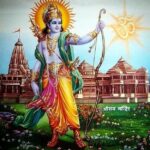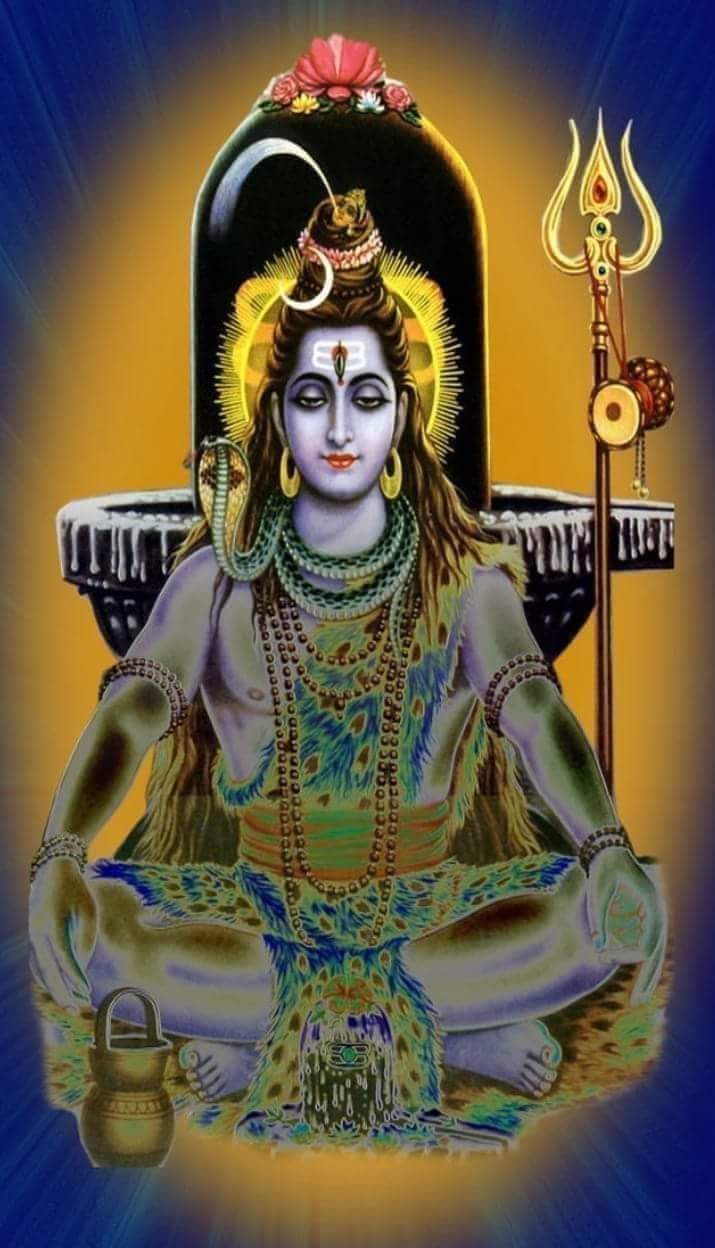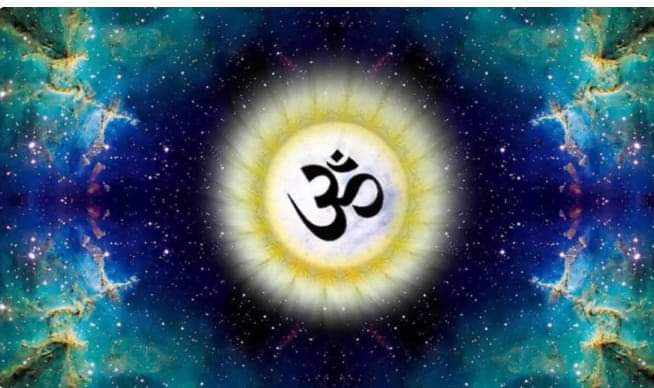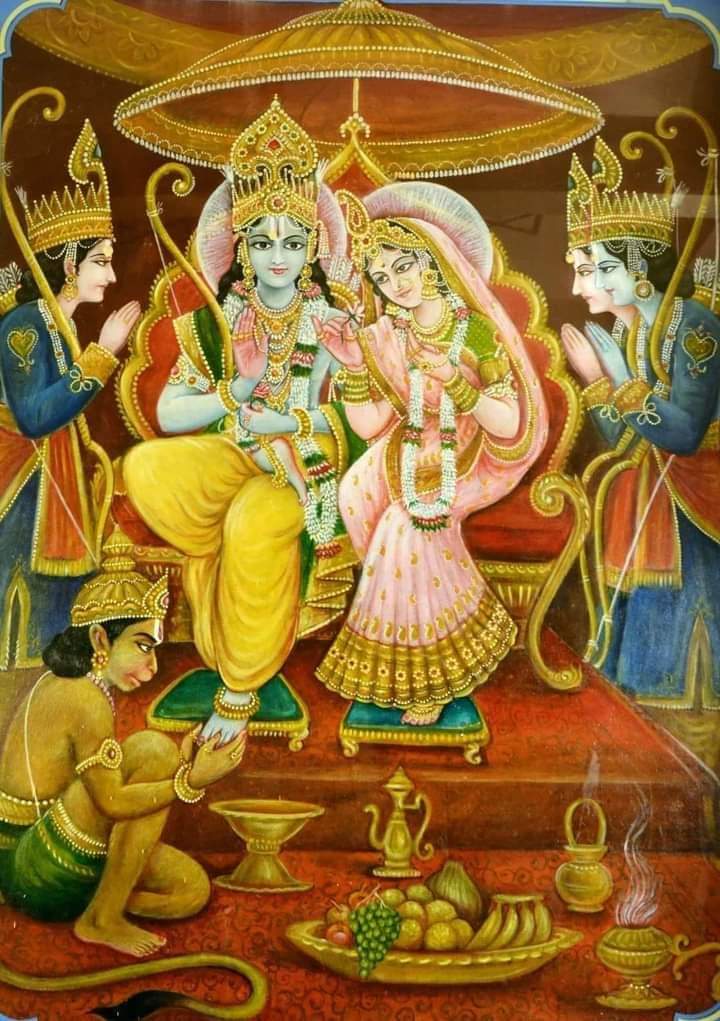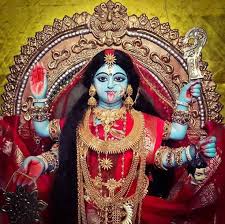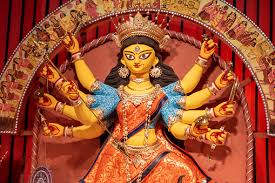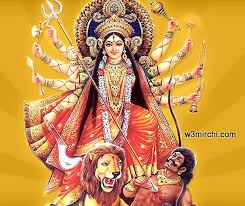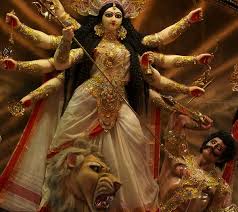जीरो(0) की खोज और पृथ्वी अपनी धुरी पर घूमती है….सर्वप्रथम इस सिद्धांत का प्रतिपादन करने वाले समृद्ध भारत के प्राचीन ऋषि आर्यभट्ट…..
आज हम सभी इस बात को जानते हैं कि पृथ्वी गोल है और अपनी धुरी पर घूमती है और इसी कारण रात और दिन होते हैं। मध्यकाल में ‘निकोलस कॉपरनिकस’ ने इसकी खोज की थी, पर इस वास्तविकता से बहुत कम लोग ही परिचित होगें कि ‘कॉपरनिकस’ से लगभग एक हजार साल पहले ही आर्यभट्ट ने यह खोज कर ली थी कि पृथ्वी गोल है और उसकी परिधि अनुमानत: 24835 मील है।आर्यभट्ट के कार्यों की जानकारी उनके द्वारा रचित ग्रंथों से मिलती है।इनका सबसे प्रसिद्ध ग्रन्थ है “आर्यभटिय”। इस महान गणितग्य ने दशगीतिका, तंत्र और आर्यभट्ट सिद्धांत जैसे ग्रंथों की रचना की थी।ऐसा माना जाता है कि ‘आर्यभट्ट सिद्धांत’ का सातवीं शती में व्यापक उपयोग होता था।सम्प्रति में इस ग्रन्थ के केवल 34 श्लोक ही उपलब्ध हैं और इतना उपयोगी ग्रंथ लुप्त कैसे हो गया इस विषय में भी विद्वानों के पास कोई निश्चित जानकारी नहीं है।
आर्यभट ने आधुनिक उन्नत साधनों के बिना ही यह महत्वपूर्ण खोज की थी।कोपर्निकस (1473 से 1543 ई.) की खोज से आर्यभट हजार वर्ष पहले ही यह खोज कर चुके थे कि पृथ्वी अपनी धुरी पर घूमती है।”गोलपाद” में आर्यभट ने लिखा है कि नाव में बैठा हुआ मनुष्य जब प्रवाह के साथ आगे बढ़ता है, तब वह समझता है कि अचर वृक्ष, पाषाण, पर्वत आदि पदार्थ उल्टी गति से जा रहे हैं। उसी प्रकार गतिमान पृथ्वी पर से स्थिर नक्षत्र भी उलटी गति से जाते हुए दिखाई देते हैं।इस प्रकार आर्यभट ने सर्वप्रथम यह सिद्ध किया कि पृथ्वी अपने कक्ष पर घूमती है।आर्यभट्ट की खगोल विज्ञान प्रणाली औदायक प्रणाली कहलाती थी।
अनुलोम-गतिस् नौ-स्थस् पश्यति अचलम् विलोम-गम् यद्-वत्।
अचलानि भानि तद्-वत् सम-पश्चिम-गानि लंकायाम् ॥ (आर्यभटीय गोलपाद ९)
अर्थात-
जैसे एक नाव में बैठा आदमी आगे बढ़ते हुए स्थिर वस्तुओं को पीछे की दिशा में जाते देखता है, बिल्कुल उसी तरह श्रीलंका में अर्थात भूमध्य रेखा पर लोगों द्वारा स्थिर तारों को ठीक पश्चिम में जाते हुए देखा जाता है।
अगला छंद तारों और ग्रहों की गति को वास्तविक गति के रूप में वर्णित करता है-
उदय-अस्तमय-निमित्तम् नित्यम् प्रवहेण वायुना क्षिप्तस्।
लंका-सम-पश्चिम-गस् भ-पंजरस् स-ग्रहस् भ्रमति ॥ (आर्यभटीय गोलपाद १०)
अर्थात-
उनके उदय और अस्त होने का कारण इस तथ्य की वजह से है कि प्रोवेक्टर हवा द्वारा संचालित गृह और एस्टेरिस्म्स चक्र श्रीलंका में निरंतर पश्चिम की तरफ चलायमान रहते हैं।
लंका (श्रीलंका) यहाँ भूमध्य रेखा पर एक सन्दर्भ बिन्दु है, जिसे खगोलीय गणना के लिए मध्याह्न रेखा के सन्दर्भ में समान मान के रूप में ले लिया गया था।आर्यभट ने सौर मंडल के एक भूकेंद्रीय मॉडल का वर्णन किया है, जिसमे सूर्य और चन्द्रमा गृहचक्र द्वारा गति करते हैं, जो कि परिक्रमा करता है पृथ्वी की। इस मॉडल में, जो पाया जाता है पितामहसिद्धान्त (ई. 425), प्रत्येक ग्रहों की गति दो ग्रहचक्रों द्वारा नियंत्रित है, एक छोटा मंद (धीमा) ग्रहचक्र और एक बड़ा शीघ्र (तेज) ग्रहचक्र। पृथ्वी से दूरी के अनुसार ग्रहों का क्रम इस प्रकार है : चंद्रमा, बुध, शुक्र, सूरज, मंगल, बृहस्पति, शनि और नक्षत्र।
ग्रहों की स्थिति और अवधि की गणना समान रूप से गति करते हुए बिन्दुओं से सापेक्ष के रूप में की गयी थी, जो बुध और शुक्र के मामले में, जो पृथ्वी के चारों ओर औसत सूर्य के समान गति से घूमते हैं और मंगल, बृहस्पति और शनि के मामले में, जो राशिचक्र में पृथ्वी के चारों ओर अपनी विशिष्ट गति से गति करते हैं।आर्यभट के मॉडल के एक अन्य तत्व सिघ्रोका, सूर्य के संबंध में बुनियादी ग्रहों की अवधि, को कुछ इतिहासकारों द्वारा एक अंतर्निहित सूर्य केन्द्रित मॉडल के चिन्ह के रूप में देखा जाता है।
उन्होनें ही सबसे पहले उदाहरण के साथ बताया की हमारी पृथ्वी अपनी धुरी पर घूमते हुए सूरज की परिक्रमा करती है और चंद्रमा पृथ्वी का उपग्रह है जो पृथ्वी की परिक्रमा करता है।उनका मानना था की सभी ग्रहों की कक्षा दीर्घ वृत्ताकार है।उन्होने बताया कि चंद्रमा का प्रकाश सूरज का ही परावर्तन है।उन्होंने ही कहा कि चंद्रमा और ग्रह सूर्य के परावर्तित प्रकाश से चमकते हैं। मौजूदा ब्रह्माण्ड विज्ञान से अलग, जिसमे ग्रहणों का कारक छद्म ग्रह निस्पंद बिन्दु राहू और केतु थे, उन्होंने ग्रहणों को पृथ्वी द्वारा डाली जाने वाली और इस पर गिरने वाली छाया से सम्बद्ध बताया। इस प्रकार चंद्रगहण तब होता है जब चंद्रमा पृथ्वी की छाया में प्रवेश करता है (छंद गोला. ३७) और पृथ्वी की इस छाया के आकार और विस्तार की विस्तार से चर्चा की (छंद गोला. ३८-४८) और फिर ग्रहण के दौरान ग्रहण वाले भाग का आकार और इसकी गणना। बाद के भारतीय खगोलविदों ने इन गणनाओं में सुधार किया, लेकिन आर्यभट की विधियों ने प्रमुख सार प्रदान किया था। यह गणनात्मक मिसाल इतनी सटीक थी कि 18 वीं सदी के वैज्ञानिक गुइलौम ले जेंटिल ने, पांडिचेरी की अपनी यात्रा के दौरान, पाया कि भारतीयों की गणना के अनुसार १७६५-०८-३० के चंद्रग्रहण की अवधि ४१ सेकंड कम थी, जबकि उसके चार्ट (द्वारा, टोबिअस मेयर, १७५२) ६८ सेकंड अधिक दर्शाते थे।
इस महान गणितज्ञ के अनुसार किसी वृत्त की परिधि और व्यास का संबंध 62,832 : 20,000 आता है जो चार दशमलव स्थान तक शुद्ध है. आर्यभट्ट कि गणना के अनुसार पृथ्वी की परिधि 39,968.0582 किलोमीटर है, जो इसके वास्तविक मान 40,075.0167 किलोमीटर से केवल 0.2 % कम है।
उन्होंने अपनी प्रसिद्ध रचना ‘आर्यभटिया’ (गणित की पुस्तक) को कविता के रूप में लिखा।यह प्राचीन भारत की बहुचर्चित पुस्तकों में से एक है. इस पुस्तक में दी गयी ज्यादातर जानकारी खगोलशास्त्र और गोलीय त्रिकोणमिति से संबंध रखती है. ‘आर्यभटिया’ में अंकगणित, बीजगणित और त्रिकोणमिति के 33 नियम भी दिए गए हैं।
आर्यभट्ट के “आर्यभटीय” नामक महत्वपूर्ण ग्रन्थ में कुल 3 पृष्ठों के समा सकने वाले 33 श्लोकों में गणित के सिद्धान्त तथा 5 पृष्ठों में 75 श्लोकों में खगोल-विज्ञान के सिद्धान्त तथा इसके लिये यन्त्रों का भी उल्लेख किया।आर्यभटीय के गणितीय भाग में अंकगणित, बीजगणित, सरल त्रिकोणमिति और गोलीय त्रिकोणमिति शामिल हैं. इसमे सतत भिन्न (कँटीन्यूड फ़्रेक्शन्स), द्विघात समीकरण (क्वड्रेटिक इक्वेशंस), घात श्रृंखला के योग (सम्स ऑफ पावर सीरीज़) और ज्याओं की एक तालिका (Table of Sines) शामिल हैं. आर्यभटीय में कुल 108 छंद है, साथ ही परिचयात्मक 13 अतिरिक्त हैं. यह चार पदों अथवा अध्यायों में विभाजित है: (a) गीतिकपाद (b) गणितपाद (c) कालक्रियापाद (d) गोलपाद.
भारतीय गणितज्ञों में सबसे महत्वपूर्ण स्थान रखने वाले आर्यभट ने 120 आर्याछंदों में ज्योतिष शास्त्र के सिद्धांत और उससे संबंधित गणित को सूत्ररूप में अपने प्रसिद्ध ग्रंथ ‘आर्यभटीय’ में प्रस्तुत किया है।उन्होंने गणित के क्षेत्र में महान आर्किमिडीज से भी अधिक सटीक ‘पाई’ के मान को निरूपित किया।
बीजगणित में सबसे महत्वपूर्ण pi()= 3.1416 की व्याख्या का श्रेय भी आर्यभट्ट को ही जाता है।
भारत के प्रथम उपग्रह आर्यभट, को उनका नाम दिया गया।चंद्र खड्ड आर्यभट का नाम उनके सम्मान स्वरुप रखा गया है। खगोल विज्ञान, खगोल भौतिकी और वायुमंडलीय विज्ञान में अनुसंधान के लिए भारत में नैनीताल के निकट एक संस्थान का नाम आर्यभट प्रेक्षण विज्ञान अनुसंधान संस्थान (एआरआईएस) रखा गया है।
अंतर्विद्यालयीय आर्यभट गणित प्रतियोगिता उनके नाम पर है।बैसिलस आर्यभट, इसरो के वैज्ञानिकों द्वारा २००९ में खोजी गयी एक बैक्टीरिया की प्रजाति का नाम उनके नाम पर रखा गया है।
ज़ीरो(0) की महान खोज ने इनका नाम इतिहास में अमर कर दिया।जिसके बिना गणित की कल्पना करना भी मुश्किल है।आरभट्ट ने ही सबसे पहले स्थानीय मान पद्धति की व्याख्या की।स्थान-मूल्य अंक प्रणाली, जिसे सर्वप्रथम तीसरी सदी की बख्शाली पाण्डुलिपि में देखा गया, उनके कार्यों में स्पष्ट रूप से विद्यमान थी।उन्होंने निश्चित रूप से प्रतीक का उपयोग नहीं किया, परन्तु फ्रांसीसी गणितज्ञ जार्ज इफ्रह के मतानुसार- रिक्त गुणांक के साथ, दस की घात के लिए एक स्थान धारक के रूप में शून्य का ज्ञान आर्यभट के स्थान-मूल्य अंक प्रणाली में निहित था।
भारतीय खगोलीय परंपरा में आर्यभट के कार्य का बड़ा प्रभाव था और अनुवाद के माध्यम से इन्होंने कई पड़ोसी संस्कृतियों को प्रभावित किया।आर्यभट की खगोलीय गणना की विधियां भी बहुत प्रभावशाली थी। त्रिकोणमितिक तालिकाओं के साथ, वे इस्लामी दुनिया में व्यापक रूप से इस्तेमाल की जाती थी और अनेक अरबी खगोलीय तालिकाओं (जिज) की गणना के लिए इस्तेमाल की जाती थी। विशेष रूप से, अरबी स्पेन वैज्ञानिक अल-झर्काली (११वीं सदी) के कार्यों में पाई जाने वाली खगोलीय तालिकाओं का लैटिन में तोलेडो की तालिकाओं (१२वीं सदी) के रूप में अनुवाद किया गया और ये यूरोप में सदियों तक सर्वाधिक सूक्ष्म पंचांग के रूप में इस्तेमाल में रही।
आर्यभट और उनके अनुयायियों द्वारा की गयी तिथि गणना पंचांग अथवा हिंदू तिथिपत्र निर्धारण के व्यावहारिक उद्देश्यों के लिए भारत में निरंतर इस्तेमाल में रही हैं।
आर्यभट्ट एक महान गणितज्ञ थे और इन्होनें ही गणनाओं को अंको द्वारा लिखने की शुरुवात की थी।उनसे पहले गणनाओं को शब्दों में लिखा जाता था जैसे एक दो तीन पंद्रह बीस सौ आदि।आर्यभट्ट ने गणनाओं को अंको में लिखना प्रारम्भ किया जैसे १ २ ३ ४ ५, २०, १५०, २००
सन् 498 में भारतीय गणितज्ञ एवं खगोलवेत्ता आर्यभट्ट ने आर्यभटीय संख्यास्थाननिरूपणम् में कहा है-
एकं च दश च शतं च सहस्रं तु अयुतनियुते तथा प्रयुतम्।
कोट्यर्बुदं च वृन्दं स्थानात्स्थानं दशगुणं स्यात्।२।
अर्थात् – एक, दश, शत, सहस्र, अयुत, नियुत, प्रयुत, कोटि, अर्बुद तथा बृन्द में प्रत्येक पिछले स्थान वाले से अगले स्थान वाला दस गुना है और यही संख्या के दशमलव सिद्धान्त का उद्गम रहा है।आर्यभट्ट द्वारा रचित गणितीय खगोलशास्त्र ग्रंथ ‘आर्यभट्टीय’ के संख्या प्रणाली में शून्य तथा उसके लिये विशिष्ट संकेत सम्मिलित था।इसी कारण से उन्हें संख्याओं को शब्दों में प्रदर्शित करने के अवसर मिला।
प्रशन उठाया जाता है कि अगर शून्य का आविष्कार 5वी सदी मे आर्यभट्ट जी ने किया तो फिर हजारों साल पहले रावण के 10 सिर बिना शून्य के कैसे गिने गए।बिना शून्य के कैसे पता लगा कि कौरव 100 थे। प्रश्न तर्कसंगत अवश्य है किंतु अनुत्तरित नहीं क्योंकि अर्वाचीन ग्रन्थों में रूचि रखने वालों के पास इसका उत्तर है।
शून्य की खोज करने वाले आर्यभट्ट का जन्म 476 ईस्वी में और देहांत 550 ईस्वी मे हुआ।रामायण तथा महाभारत का काल इससे बहुत पुराना है।वर्तमान मे हिन्दी भाषा का लेखन कार्य देवनागरी लिपि मे किया जाता है।इससे पहले की लिपि रामायण व महाभारत काल की लिपि ब्राह्मी लिपि थी।देवनागरी लिपि के प्रयोग से पहले शून्य की परिकल्पना भी नहीं थी।
देवनागरी से पहले ब्राह्मी लिपि प्रचलन में थी।ब्राह्मी लीपि में गणना की व्यस्था तो थी लेकिन इस गणना में शून्य नहीं था।शून्य के बिना ही दस बीस और सौ जैसी संख्यायों की गणना की जाती थी।इसमें प्रत्येक संख्या के लिये एक विशेष प्रकार के चिन्ह होते थे।आप चित्र माध्यम से समझ सकते है की शून्य के बिना भी 10 20 या 100, 200, 1000 जैसी संख्याओ की गणना हो सकती थी। इसमें प्रत्येक संख्या के लिये एक विशेष प्रकार का प्रतीक है।अत: शून्य के बिना ही गणना भी की जाती थी और इसे शब्दों व विशेष प्रतीकों के माध्यम से लिखा भी जाता था।
The discovery of zero (0) and the earth rotates on its axis…. Aryabhata, the ancient sage of prosperous India, who first propounded this principle…..
Today we all know that the earth is round and rotates on its axis and that is why there are night and day. It was discovered by ‘Nicolaus Copernicus’ in medieval times, but very few people would be familiar with the fact that about a thousand years before ‘Copernicus’, Aryabhata had discovered that the earth is round and its circumference is approximately 24835. Mile. The information about the works of Aryabhata comes from the books composed by him. His most famous book is “Aryabhatiya”. This great mathematician had composed texts like Dashagitika, Tantra and Aryabhata Siddhanta. It is believed that ‘Aryabhata Siddhanta’ was widely used in the seventh century. At present only 34 verses of this book are available and such a useful book Scholars do not have any definite information about how it disappeared.
Aryabhata had made this important discovery without modern advanced means. Aryabhata had already discovered thousand years before the discovery of Copernicus (1473 to 1543 AD) that the earth rotates on its axis. It is said that when a person sitting in a boat moves forward with the flow, then he understands that the things like immovable trees, stones, mountains etc. are moving in the opposite direction, in the same way the fixed constellations are also seen moving in the opposite direction from the moving earth. In this way, Aryabhata first proved that the earth revolves on its orbit. Aryabhata’s system of astronomy was called Audaya system.
The inverse-moving boat-man sees the unchanging inverse-going as if. The lights of the city of Lanka are unmovable and equally westward. (Aryabhatiya Golapada 9) That is, Just as a man in a boat sees fixed objects moving backwards while moving forward, exactly the same way fixed stars are seen moving due west by people in Sri Lanka i.e. at the equator.
The next verse describes the motion of stars and planets as actual motion-
He is thrown by the wind in a constant flow for the sake of rising and setting. The planet orbits the western Gasbha cage, which is equal to Lanka. (Aryabhatiya Golapada 10) That is, The reason for their rising and setting is due to the fact that the house and asterisms cycles driven by the provector wind are constantly moving westwards in Sri Lanka.
Lanka (Sri Lanka) is here a reference point on the equator, which was taken as the equivalent value with respect to the meridian for astronomical calculations. Aryabhata described a geocentric model of the solar system, in which the Sun and the Moon They move by the planetary wheel, which revolves around the Earth. In this model, which is found in the Pitamahasiddhanta (AD 425), the motion of each of the planets is controlled by two planetary systems, a smaller manda (slow) planetary system and a larger fast (fast) planetary system. The order of the planets according to their distance from the earth is as follows: Moon, Mercury, Venus, Sun, Mars, Jupiter, Saturn and constellations.
The positions and periods of the planets were calculated relative to points moving uniformly, in the case of Mercury and Venus, which revolve around the Earth at the same speed as the average Sun, and Mars, Jupiter and Saturn. In the case of the planets, they move at their characteristic speeds around the Earth in the zodiac. Another element of Aryabhata’s model, the Sigroka, the basic planetary periods with respect to the Sun, has been seen by some historians as a sign of an underlying heliocentric model. is seen in
He told with the first example that our earth revolves around the sun while rotating on its axis and the moon is the satellite of the earth which revolves around the earth. He believed that the orbit of all the planets is elliptical. He told that the moon Sun’s light is the reflection of the sun itself. It was he who said that the moon and the planets shine with the reflected light of the sun. Unlike existing cosmology, in which eclipses were caused by the pseudo-planetary null points Rahu and Ketu, he related eclipses to the shadow cast by the Earth and falling on it. Thus a lunar eclipse occurs when the Moon enters the Earth’s shadow (verses. 37) and the shape and extent of this Earth’s shadow is discussed in detail (verses. 38-48) and then the eclipse occurs during an eclipse. Portion size and calculation. Later Indian astronomers improved upon these calculations, but Aryabhata’s methods provided the major gist. This calculative precedent was so accurate that the 18th-century scientist Guillaume Le Gentil, during his visit to Pondicherry, found that the duration of the lunar eclipse of 1765-08-30 was 41 seconds less than what his charts (by , Tobias Meyer, 1752) indicated 68 seconds more.
According to this great mathematician, the relation between circumference and diameter of a circle is 62,832 : 20,000, which is accurate to four decimal places. According to the calculation of Aryabhata, the circumference of the earth is 39,968.0582 km, which is only 0.2% less than its actual value of 40,075.0167 km.
He wrote his famous work ‘Aryabhatiya’ (Book of Mathematics) in the form of poetry. It is one of the famous books of ancient India. Most of the information given in this book is related to astronomy and spherical trigonometry. 33 rules of arithmetic, algebra and trigonometry are also given in ‘Aryabhatiya’. In Aryabhata’s important book called “Aryabhatiya”, the principles of mathematics in 33 verses that can be contained in a total of 3 pages and the principles of astronomy in 75 verses in 5 pages and instruments for this were also mentioned. Arithmetic in the mathematical part of Aryabhatiya, Covers algebra, simple trigonometry, and spherical trigonometry. These include continued fractions, quadratic equations, sums of power series, and a Table of Sines. There are a total of 108 verses in the Aryabhatiya, as well as 13 additional introductory verses. It is divided into four posts or chapters: (a) Geetikapada (b) Ganitapada (c) Kalakriyapada (d) Golpada.
Aryabhata, who holds the most important place among Indian mathematicians, has presented the theory of astrology and its related mathematics in 120 verses in the formula form in his famous treatise ‘Aryabhatiya’. denoted the value. The credit for the explanation of the most important pi () = 3.1416 in algebra also goes to Aryabhata.
Aryabhata, India’s first satellite, was named after him. The lunar crater Aryabhata is named in his honour. An institute near Nainital in India named Aryabhata Research Institute of Observational Sciences (ARIS) for research in astronomy, astrophysics and atmospheric sciences. The Aryabhata Interschool Mathematics Competition is named after him. Bacillus Aryabhata, a species of bacteria discovered in 2009 by ISRO scientists, is named after him.
The great discovery of zero (0) immortalized his name in history. Without which it is difficult to imagine mathematics. It was Arbhatta who first explained the place value system. seen in the manuscript, clearly present in his works. He certainly did not use the symbol, but used zero as a place holder for powers of ten, with empty coefficients—according to the French mathematician Georges Ifrah. The knowledge was contained in Aryabhata’s place-value number system. Aryabhata’s work was of great influence in the Indian astronomical tradition and through translation influenced many neighboring cultures. Aryabhata’s methods of astronomical calculations were also very influential. Along with trigonometric tables, they were widely used in the Islamic world and were used to calculate many Arabic astronomical tables (jij). In particular, astronomical tables found in the works of the Arab Spanish scientist al-Zarkali (11th century) were translated into Latin as the Tables of Toledo (12th century) and served as the most accurate almanacs in Europe for centuries. Been in use The date calculations made by Aryabhata and his followers have been in continuous use in India for the practical purposes of determining the Panchanga or Hindu calendar.
Aryabhata was a great mathematician and it was he who started writing the calculations by numbers. Before him the calculations were written in words like one two three fifteen twenty hundred etc. Aryabhata started writing the calculations in numbers like 1 2 3 4 5, 20, 150, 200
In 498, the Indian mathematician and astronomer Aryabhata said in Aryabhatiya Sankhyasthananirupanam:
One and ten and one hundred and one thousand, but ten thousand and ten thousand, and so on. and a crore of billions of groups from place to place will be ten times. That is, in one, ten, hundred, thousand, ayut, niyut, prayut, koti, arbud and brind, each of the previous positions is ten times the next position and this has been the origin of the decimal theory of numbers The number system of ‘Aryabhattiya’ included zero and the specific symbol for it.This is why he got the opportunity to represent numbers in words.
The question is raised that if zero was invented by Aryabhatta ji in the 5th century, then how thousands of years ago, 10 heads of Ravana were counted without zero. The question is certainly logical but not unanswered because those who are interested in ancient texts have the answer. Aryabhatta, who discovered zero, was born in 476 AD and died in 550 AD. The period of Ramayana and Mahabharata is much older than this. At present, the writing work of Hindi language is done in Devanagari script. Before this script Ramayana and Mahabharata period The script was Brahmi script. Before the use of Devanagari script, there was no concept of zero. Before Devanagari, Brahmi script was in vogue. There was a system of calculation in Brahmi script but there was no zero in this calculation. Numbers like ten, twenty and hundred were calculated without zero. There were symbols. You can understand from the picture that even without zero, numbers like 10, 20 or 100, 200, 1000 could be calculated. There is a special type of symbol for each number in this. Therefore, calculations were also done without zero and it was also written through words and special symbols.





